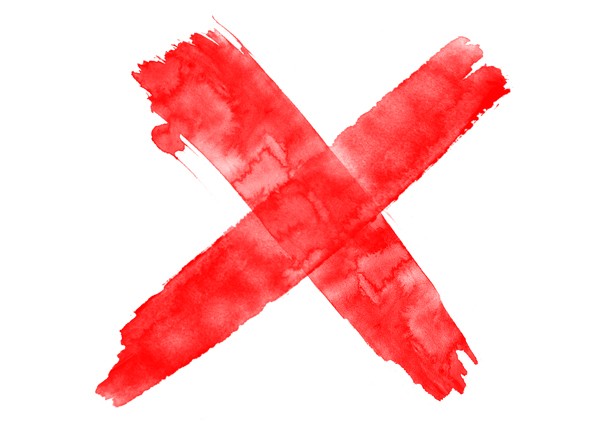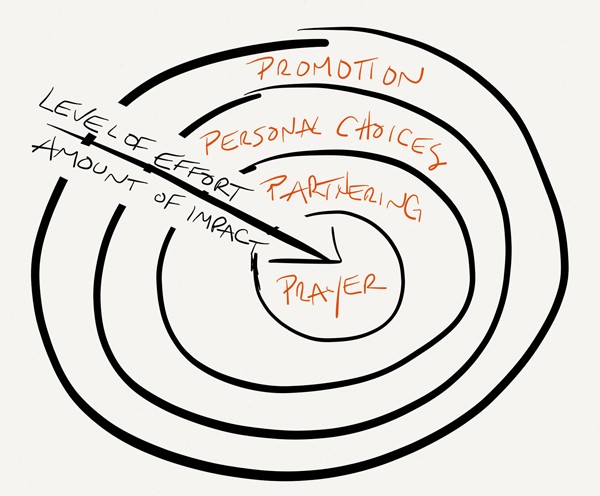What good could drawing a red “X” on my hand possibly do?
How could that help? How could it make a difference?

According to the End It Movement, an awareness group and coalition of anti-slavery organizations, there are 27 million slaves in the world. More in sheer number than any other time in human history. Forty percent of those slaves are sex slaves.
That reality knots my stomach. I’ve read stories of slaves stolen for forced sex, forced labor and even organ harvesting. It’s nauseating and heartbreaking.
So how does me posting a picture of an X to Instagram and Twitter make any impact?
I wrestled with the idea. I didn’t want to be a slacktivist–posting a picture with a trendy icon or a link to a website just because everyone else (in my circles) was. I’ve thought a lot about how to tackle a problem with a massive, global scale. Human trafficking. Extreme poverty. Unreached people groups.
Issues that all deserve our attention. But how do I make a difference without knowing how to be actively involved?
Kevin DeYoung says in Crazy Busy,
We won’t all care about every issue in the same way, but there are some issues we should all care about, some issues that should at least prick our hearts and prompt us to pray. Not giving a rip about sex slaves is not an option for the Christian.
I’ve just dipped my toe into the cesspool of human trafficking. I don’t have all the answers, and honestly I’m just trying to learn and help others do the same as we fight one of the greatest injustices in our world today.
Any problem buried this deep in sin requires a multi-faceted solution to fix. I believe that solution travels four concentric circles, all working together to find a solution. Promotion, personal choices, partnering, and prayer.

Here’s how I see pandemic issues being tackled, specifically in the context of human trafficking.
1. Promotion
We can’t fight a problem we don’t know about. Every issue has to start on the awareness level. It’s simultaneously the easiest part (promotion can be free, and can take only a moment to start) and the most daunting. I can post a picture to Instagram, Facebook and Twitter and hope to influence some of my followers. But what about the other 99.9999% of the world?
It’s a bit like the trite story of the boy throwing starfish back into the sea–make a difference where you can. Many great things are accomplished through small steps of faith and prodding.
As the End It Movement says, awareness leads to action. And this is the first step.
2. Personal Choices
With human trafficking, there are a number of organizations that work to make sure companies are using fair, non-slave labor. We must do the research to support organizations that are fighting against injustice through their decisions.
Here’s a list from Free2Work, a subsidiary of Not for Sale, of organizations that are taking steps toward eradicating human trafficking through their supply chain.
3. Partnering
There are organizations around the world that are actively rescuing slaves, lobbying for legislation to convict slave owners and working for the restoration and flourishing of former slaves.

Coalition Partners with the End It Movement
I can’t just bust into a brothel and hope to start freeing slaves. I don’t have the wisdom, connections, ability or legal authority to navigate this cornucopia of sin. This article gives a glimpse of the process to free a slave. This next section is a brief summary of the eye-opening article from Relevant Magazine.
1. Investigate
To free a slave, you must first find a slave. Government organizations and non-profits must partner together to target and find slave owners while building relationships with those slave owners and pimps so that they can eventually scrounge up the evidence to prove their guilt.
2. Form Government Partnerships
Taking an underage person against their will is kidnapping, even if it’s done with the hope of freeing a slave. NGOs don’t have the legal authority to pull a victim out of a brothel, so organizations must partner with governments to rescue victims. This is especially tricky where governments are corrupt or there is no legislation on prosecuting slave owners.
3. Raid
This is the most intense piece–physically rescuing slaves and arresting owners. In many countries, corruption, bribes and tip-offs destroy raids, and slave owners get away. The process leading up to, throughout and after a raid can involve:
- Police
- Investigators
- National Social Workers
- Local lawyers specializing in victims rights
- Translators
- Medical doctors
- Counselors
It’s complicated, messy, emotional and difficult in every sense. And it takes a lot of collaborative effort. I can be involved by volunteering at a local level with an organization, and partnering with my money at a local and international level to offer the resources to help rescue slaves.
4. Advocacy and Prosecution
It’s possible for rescued victims and perpetrators to slip through the cracks–for victims to be stuck in under-prepared government facilities without help, advocacy and counseling–leading to victims wanting to escape what feels like a new form of slavery and ending up back on the streets.
For the criminals, if there aren’t laws in place to properly convict them, fine them and lock them up, there isn’t enough of a deterrent to keep them from returning to their old, human-enslaving ways. Governments have to create laws that can be enforced to take away the economic gain of human trafficking to make the act less lucrative.
Rescuing a slave takes time (sometimes years for one trip through this process), resources (people, dollars, laws, organizations) strategy and determination.
“It might take a village to raise a child, but it takes an entire army to free one.”
– Matt and Laura Parker
4. Prayer
From the Christian perspective, this is the most powerful piece–and the piece that will undoubtedly bring everything else together. Jesus came to free all humans from the slavery and bondage of sin. We as the Church should proclaim freedom through the gospel, and should fight for, and especially pray for, the freedom of actual slaves and their salvation.
Human trafficking is a result of a sin-stricken world. The only hope for overcoming sin is the sin-overcomer, the God-man Jesus Christ. Pray that God would comfort slaves, that he would help organizations to free slaves, that slave owners would come to Christ, admit to their wrong and free their slaves, and that Jesus’ would hasten that day of his coming when all wrongs will be finally righted.
Wrapping Up
So, should you draw a red X on your hand? Do you want to get involved?
Don’t draw an X because your friends are doing it. Or because that instantly makes you an abolitionist. Do it because it’s the logical first step to ending one of the most heartbreaking issues in our world.
Then start making decisions with your dollars to support organizations that don’t use slaves. Then look into volunteering at a local level and committing your money to an organization that has the ability and knowledge to actually free slaves.
And most of all–pray.